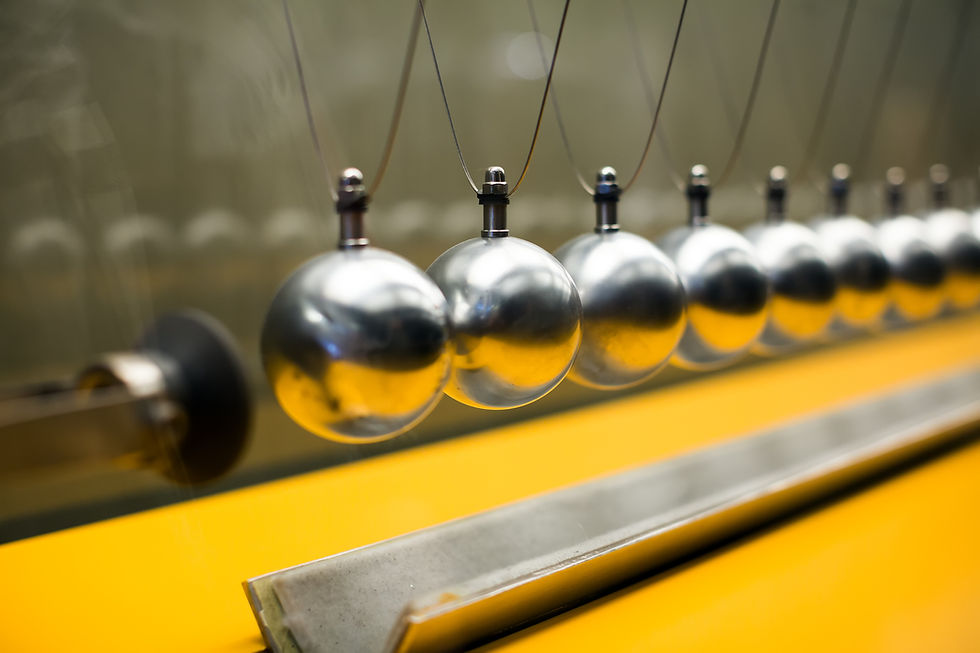Research: Does Herniated Disc Affect the Whole Spine?
- Melody Angeli
- Mar 22, 2021
- 3 min read

Why is it important to protect the vertebrae? Each vertebra has its function in the body. The vertebrae can get many types of disease or receive a type of trauma in the vertebrae which may cause severe damage if not treated correctly. One of them is called a Herniated disc. A herniated disc is part of the body that creates an abnormal opening of the disc. The disc is disc-shaped and has a soft, jelly-like center; it can occur in any part of the spine that can irritate the nervous system. As result, it can cause pain, numbness, or weakness in the human body. The main causes of a herniated disc can either be aging-related wear or a tear. In most cases, they aren't able to know the exact cause of how it all started, but it could be due to exerting too much strain in the back muscles when lifting a heavy object or by a traumatic, event such as a fall to the back. If the symptoms worsen, it is very important to seek medical attention.
There are five parts of the spine. Starting from the top of the human anatomy, there is the cervical, thoracic, lumbar vertebra, and the last two are the sacrum and coccyx. Each one will be touched on and how herniations can happen and affect human anatomy and its functions. The cervical spine is located at the neck region which consists of seven bones. Each cervical bone has nervous systems that control the body and mind. The cervical spine controls the neck muscle, the diaphragm, the deltoid (a.k.a shoulder), wrist, triceps, and fingers.
So, how exactly do herniated discs affect the cervical vertebra? If the cervical has a herniated disc, then it would cause pressure in the spinal cord, and if the pain is caused by a serious accident, then it could end up paralyzing the main parts that the cervical nervous system is in charge of.
The thoracic vertebra is located between the cervical and the lumbar which consists of twelve bones. In a human spine chart, the thoracic is split into T1-T12. Starting with the T1 nervous system in charge of the hand, T2-T12 is part of the intercostal(Trunk). Then T7 is Abdominals and T11 is the ejaculation. If the herniated disc occurs in the thoracic spine, it could potentially cause paralysis of the section in the T1-T-12
Lumbar vertebrae consist of five large bones. The lumbar is also split into sections which are L2-L4. L2 function is the ejaculation and the hips, the L3 function is the quadriceps, L4-L5 are the hamstrings and knee, and L4-S1 function is the foot. Although, the lumbar is more likely to get diseases because it can withstand the amount of force. The sacrum is the lowest body part in the spine; it only consists of one bone. Since the lumbar L4 is connected with S1, it could cause injury in the sacrum region because there is lots of stress and twisting in daily activities. The last two sections in the sacrum are S2 and S3. S2 function is penile erection and S3 is the bowel and bladder. If the herniated disc reaches the sacrum, then it would cause incontinence or difficulty urinating even with a full bladder. If there was trauma to the tailbone, then it would lead to inflammation surrounding the coccyx. In most cases, part of the sacrum may dislocate at the front or back of the tailbone causing extreme pain in the coccyx.
Sources
“Herniated Disk.” Mayo Clinic, Mayo Foundation for Medical Education and Research, 26 Sept. 2019, www.mayoclinic.org/diseases-conditions/herniated-disk/symptoms-causes/syc-20354095.
“How the Spinal Cord Works.” Reeve Foundation, www.christopherreeve.org/living-with-paralysis/health/how-the-spinal-cord-works?fbclid=IwAR1aBWvraCLDY9IPJcIlh-zGyracoO1qPobUXoBlQfC7_Bx3Y_bbo0_byn8.
“Herniated Disc - Discover Symptoms and Find the Right Treatments. Pain Relief Institute.” The Spine Hospital at The Neurological Institute of New York, www.columbiaspine.org/condition/herniated-disc/.



Comments